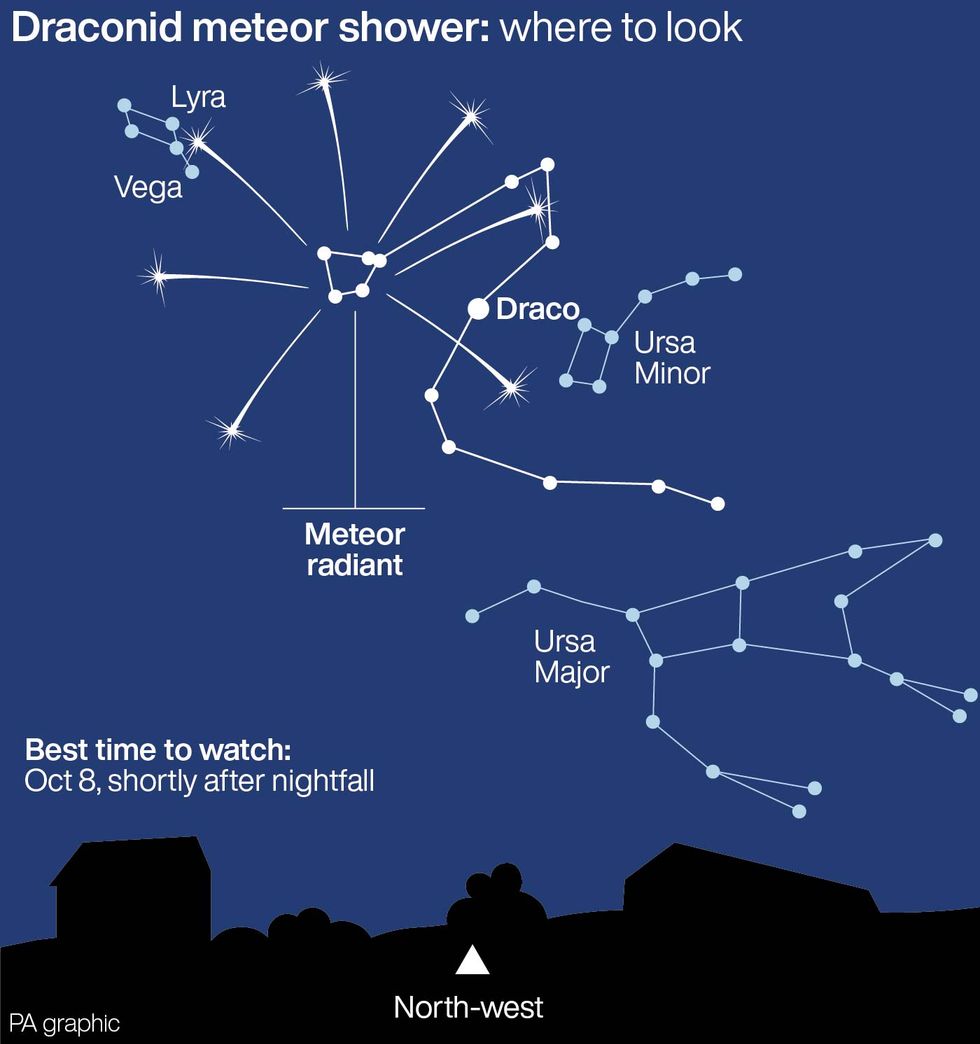Nilima Marshall
Oct 07, 2022

The Draconid meteor shower, also known as the Giacobinids, will peak on October 8 (Danny Lawson/PA)
PA Archive/PA Images - Danny Lawson
Skygazers are set to catch a glimpse of celestial fireworks on Saturday night as the Earth passes through a cloud of cometary dust.
The Draconid meteor shower, also known as the Giacobinids, will peak on October 8 in the afternoon but the best time to see it will be in the evening, just after sunset.
Named after the constellation of Draco the dragon, the Draconids take place every year and are one of the two meteor showers to light up the skies in October.
The streaks spawn from the comet 21P/Giacobini-Zinner, which orbits around the sun for six-and-a-half years.
Tania de Sales Marques, an astronomer at the Royal Observatory Greenwich, told the PA news agency: “The Draconids are a short-lived meteor shower that is active from 6-10 October and is expected to peak at around 2pm UK time with a maximum rate of 10 meteors per hour.

“Draco will be at its highest point in the sky after sunset on the 8th, in the direction of North, however, the full moon will also be up, brightening up the sky and making it hard to spot fainter meteors.”
The meteor shower will be visible with the naked eye, but skygazers will need to let their eyes adjust to the darkness.
Ms de Sales Marques told PA: “Like with any other skywatching activity, make sure to have an unobstructed view of the sky, as far away from sources of light as possible.
“Remember to dress warmly now that the evenings are colder and wait about 15-20 minutes for your eyes to adjust to the dark before looking out for meteors.”
The Draconids will remain visible until October 10.
A second meteor shower, the Orionids, will also take place later this month, peaking on October 21.
Top 100
The Conversation (0)













